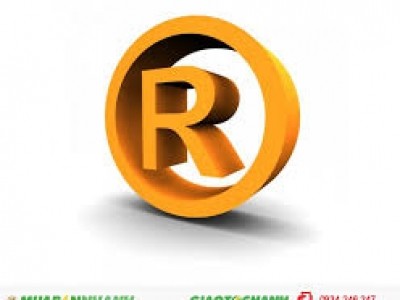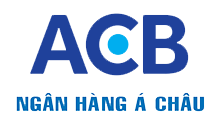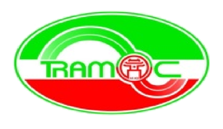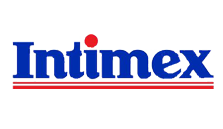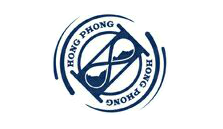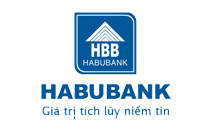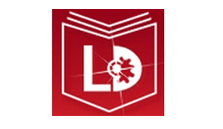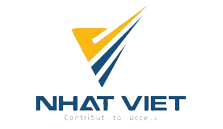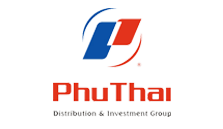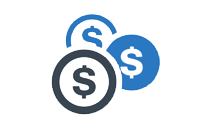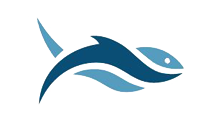ON INTELLECTUAL PROPERTY
ON INTELLECTUAL PROPERTY
|
NATIONAL ASSEMBLY |
SOCIALIST REPUBLIC OF VIET NAM |
|
No. 50/2005/QH11 |
Hanoi, November 29, 2005 |
National Assembly of the Socialist Republic of Vietnam Legislature XI, Session 8
(From 18 October until 29 November 2005)
Pursuant to the 1992 Constitution of the Socialist Republic of Vietnam as amended by Resolution 51/2001/QH10 passed by Legislature X of the National Assembly at its 10th Session on 25 December 2001;
This Law regulates intellectual property.
This Law regulates copyright, copyright related rights, industrial property rights and rights to plant varieties; and the protection of such rights.
Article 2. Applicable entities
This Law shall apply to Vietnamese organizations and individuals and to foreign organizations and individuals who satisfy the conditions stipulated in this Law and in any international treaty of which the Socialist Republic of Vietnam is a member.
Article 3. Subject matter of intellectual property rights
1. The subject matter of copyright shall comprise literary, artistic and scientific works; the subject matter of copyright related rights shall comprise performances, audio and visual fixation, broadcasts and satellite signals carrying coded programmes.
2. The subject matter of industrial property rights shall comprise inventions, industrial designs, designs of semi-conducting closed circuits, trade secrets, marks, trade names and geographical indications.
3. The subject matter of rights to plant varieties shall comprise plant varieties and reproductive materials.
Article 4. Interpretation of terms
In this Law, the following terms shall be construed as follows:
1. Intellectual property rights means rights of an organization or individual to intellectual assets comprising copyright and copyright related rights, industrial property rights and rights to plant varieties.
2. Copyright means rights of an organization or individual to works which such organization or individual created or owns.
3. Copyright related rights (hereinafter referred to as related rights) means rights of an organization or individual to performances, audio and visual fixation, and broadcasts and satellite signals carrying coded programmes.
4. Industrial property rights means rights of an organization or individual to inventions, industrial designs, designs of semi-conducting closed circuits, trade secrets, marks, trade names and geographical indications which such organization or individual created or owns, and the right to prevent unfair competition.
5. Rights to plant varieties means rights of an organization or individual to new plant varieties which such organization or individual has selected and created, discovered and developed, or which they own.
6. Intellectual property right holder means an owner of intellectual property rights or an organization or individual to whom intellectual property rights are assigned by the owner.
7. Work means a creation of the mind in the literary, artistic or scientific sector, expressed in any mode or form.
8. Derivative work means a work translated from one language into another; or an adapted, modified, transformed, compiled, annotated or selected work.
9. Published work, audio and visual fixation means a work or audio and visual fixation which has been published with the permission of the copyright holder or related right holder in order to distribute it to the public in a reasonable amount of copies.
10. Reproduction means the making of one or more copies of a work, audio and visual fixation by whatever mode or in whatever form, including permanent or provisional backup of the work in electronic form.
11. Broadcasting means the transmission of sound or image or both sound and image of a work, performance, audio and visual fixation or broadcast to the public by wireless or landline means including satellite transmission, in such a way that the public may access such work from any place and time the public selects.
12. Invention means a technical solution in the form of a product or process which is intended to solve a problem by application of natural laws.
13. Industrial design means the outward appearance of a product embodied in three dimensional configuration, lines, colours or a combination of such elements.
14. Semiconductor integrated circuit means a product in its intermediate or final form in which the elements, at least one of which is an active element, and some or all of the interconnections, are integrally formed in or on a piece of semiconductor material and which is intended to perform an electronic function. Integrated circuit is synonymous with IC, chip and micro-electronic circuit.
15. Design of semi-conducting closed circuits (hereinafter referred to as layout design) means a three dimensional disposition of circuit elements and their interconnections in a semi-conducting closed circuit.
16. Mark means any sign used to distinguish goods or services of different organizations or individuals.
17. Collective mark means a mark used to distinguish goods or services of members of an organization which is the owner of such mark from marks of non-members of such organization.
18. Certification mark means a mark which is authorized by its owner to be used by another organization or individual on the latter’s goods or services in order to certify the origin, raw materials, materials, mode of manufacture of goods or manner of provision of services, and the quality, accuracy, safety or other characteristic of goods or services bearing such mark.
19. Integrated marks means identical or similar marks registered by the same entity and intended for use on products or services which are of the same, similar or interrelated type.
20. Well known mark means a mark widely known by consumers throughout the territory of Vietnam.
21. Trade name means the designation of an organization or individual used in business activities in order to distinguish the business entity bearing such trade name from other business entities in the same business sector and area.
Business area as stipulated in this clause means the geographical area in which a business entity has its partners, customers or reputation.
22. Geographical indication means the sign used to identify a product as originating from a specific region, locality, territory or country.
23. Trade secret means information obtained from activities of financial or intellectual investment, which has not yet been disclosed and which is able to be used in business.
24. Plant variety means a plant grouping within a single botanical taxon of the lowest known rank, which is morphologically uniform and suitable for being propagated unchanged, and can be defined by the expression of phenotypes resulting from a genotype or a combination of given genotypes, and distinguished from any other plant grouping by the expression of at least one inheritable phenotype.
25. Protection title means a document granted by the competent State body to an organization or individual in order to establish industrial property rights to an invention, industrial design, layout design, mark or geographical indication; or in order to establish rights to a plant variety.
Article 5. Application of laws
1. The provisions of the Civil Code shall apply to intellectual property related civil matters which are not regulated by this Law.
2. Where there are any differences between the provisions on intellectual property in this Law and the provisions in other laws, the provisions in this Law shall apply.
3. Where an international treaty of which the Socialist Republic of Vietnam is a member contains provisions different from those in this Law, such international treaty shall apply.
Article 6. Grounds for the generation and establishment of intellectual property rights
1. Copyright shall arise at the moment a work is created and fixed in a certain material form, irrespective of its content, quality, form, mode and language and irrespective of whether or not such work has been published or registered.
2. Related rights shall arise at the moment a performance, audio and visual fixation, broadcast or satellite signal carrying coded programmes is fixed or displayed without causing loss or damage to copyright.
3. Industrial property rights shall be established as follows:
(a) Industrial property rights to an invention, industrial design, layout design, mark or geographical indication shall be established on the basis of a decision of the competent State body to grant a protection title in accordance with the registration procedures stipulated in this Law or the recognition of international registration pursuant to an international treaty of which the Socialist Republic of Vietnam is a member. In the case of a well known mark, industrial property rights shall be established on the basis of use and shall not be dependent on registration procedures;
(b) Industrial property rights to a trade name shall be established on the basis of lawful use thereof;
(c) Industrial property rights to a trade secret shall be established on the basis of lawful acquirement of the trade secret and maintaining confidentiality thereof;
(d) The right to prevent unfair competition shall be established on the basis of competitive activities in business.
4. Rights to a plant variety shall be established on the basis of a decision of the competent State body to grant a plant variety protection title in accordance with the registration procedures stipulated in this Law.
Article 7. Limitations on intellectual property rights
1. Intellectual property right holders shall only be permitted to exercise their rights within the scope and term of protection provided for in this Law.
2. The exercise of intellectual property rights must not infringe the interests of the State, the public interest or the legitimate rights and interests of other organizations and individuals, and must not breach other relevant provisions of law.
3. In order to assure objectives of national defence and security, the people’s livelihood and other interests of the State and society stipulated in this Law, the State may prohibit or restrict the exercise of intellectual property rights by the holders thereof or may compel such holders to license one or more of their rights to other organizations or individuals on appropriate terms.
Article 8. Policies of the State on intellectual property
1. To recognize and protect intellectual property rights of organizations and individuals on the basis of harmonizing the interests of intellectual property right holders and the public interest; not to protect intellectual property objects which are contrary to social ethics and public order or which harm national defence and security.
2. To encourage and promote activities of creation and utilization of intellectual assets aimed at contributing to socio-economic development and improving the people’s material and spiritual life.
3. To provide financial support for the receipt and use of transferred intellectual property rights servicing the public interest; to encourage Vietnamese and foreign organizations and individuals to provide financial aid for creative activities and for the protection of intellectual property rights.
4. To prioritize investment in training and fostering senior officials, public servants and other relevant subjects engaged in the work of protecting intellectual property rights and to prioritize research into and application of science and techniques for the protection of intellectual property rights.
Article 9. Right and responsibility of organizations and individuals in the protection of intellectual property rights
Organizations and individuals shall have the right to themselves take measures permitted by law to protect their intellectual property rights, and shall be obliged to respect the intellectual property rights of other organizations and individuals in accordance with the provisions of this Law and other relevant laws.
Article 10. Contents of State administration of intellectual property
1. Formulating and directing the implementation of strategies and policies on protection of intellectual property rights.
2. Promulgating and organizing the implementation of legal instruments on intellectual property.
3. Organizing an administrative apparatus for intellectual property; training and fostering staff to administer intellectual property.
4. Granting and carrying out other procedures related to registered copyright certificates, registered related rights certificates, protection titles for industrial property objects and plant variety protection titles.
5. Inspecting and examining compliance with the law on intellectual property; settling complaints and denunciations, and dealing with breaches of the law on intellectual property.
6. Organizing information and statistics on intellectual property.
7. Organizing and administering intellectual property assessment activities.
8. Educating, and communicating and disseminating knowledge about intellectual property and the law on intellectual property.
9. Conducting international co-operation on intellectual property.
Article 11. Responsibility for State administration of intellectual property
1. The Government shall exercise uniform State administration of intellectual property.
2. The Ministry of Science and Technology shall be responsible before the Government to preside over co-operation with the Ministry of Culture and Information and the Ministry of Agriculture and Rural Development to carry out State administration of intellectual property and of industrial property rights.
The Ministry of Culture and Information shall, within the scope of its duties and powers, carry out State administration of copyright and related rights.
The Ministry of Agriculture and Rural Development shall, within the scope of its duties and powers, carry out State administration of rights to plant varieties.
3. Ministries and ministerial equivalent bodies shall, within the scope of their respective duties and powers, co-ordinate with the Ministry of Science and Technology, the Ministry of Culture and Information and the Ministry of Agriculture and Rural Development to carry out State administration of industrial property.
4. People’s committees at all levels shall, within the scope of their authority, carry out State administration of industrial property within their respective localities.
5. The Government shall provide specific regulations on the powers and responsibilities for State administration of industrial property of the Ministry of Science and Technology, the Ministry of Culture and Information, the Ministry of Agriculture and Rural Development Science and of people’s committees at all levels.
Article 12. intellectual property fees and charges
Organizations and individuals shall be required to pay fees and charges when carrying out procedures related to intellectual property rights in accordance with the provisions of this Law and other related laws.
CONDITIONS FOR PROTECTION OF COPYRIGHT AND RELATED RIGHTS
Section 1. CONDITIONS FOR PROTECTION OF COPYRIGHT
Article 13. Authors and copyright holders with works which are protected by copyright
1. Organizations and individuals with works which are protected by copyright comprise persons who directly create such works and copyright holders stipulated in articles 37 to 42 inclusive of this Law.
2. Authors and copyright holders stipulated in clause 1 of this article shall comprise Vietnamese organizations and individuals; foreign organizations and individuals with works published for the first time in Vietnam and not yet published in any other country, or with works also published in Vietnam within thirty days after publication for the first time in another country; and foreign organizations and individuals with works which are protected in Vietnam pursuant to an international treaty on copyright of which the Socialist Republic of Vietnam is a member.
Article 14. Types of works which are protected by copyright
1. Literary, artistic and scientific works which are protected by copyright comprise:
(a) Literary works, scientific works, textbooks, teaching courses and other works expressed in written language or other characters;
(b) Lectures, addresses and other speeches;
(c) Press works;
(d) Musical works;
(dd) Stage works;
(e) Cinematographic works and works created by a process analogous to cinematography (hereinafter all referred to as cinematographic works);
(g) Plastic art works and applied art works;
(h) Photographic works;
(i) Architectural works;
(k) Sketches, plans, maps and drawings related to topography or scientific works;
(l) Folklore and folk art works;
(m) Computer programs and data collections.
2. Derivative works shall only be protected pursuant to the provisions of clause 1 of this article if such protection is not prejudicial to the copyright in the works used to create such derivative works.
3. Protected works as stipulated in clauses 1 and 2 of this article must be created personally by authors through their intellectual labour and without copying the works of others.
4. The Government shall provide detailed guidelines on the types of works stipulated in clause 1 of this article.
Article 15. Subject matter outside the category of copyright protection
1. News of the day as mere items of information.
2. Legal instruments, administrative and other documents in the judicial domain, and official translations of such documents.
3. Processes, systems, operational methods, concepts, principles and data.
Section 2. CONDITIONS FOR PROTECTION OF RELATED RIGHTS
Article 16. Organizations and individuals eligible for protection of related rights
1. Actors and actresses, singers, instrumentalists, dancers and other persons who perform literary and artistic works (hereinafter all referred to as performers).
2. Organizations and individuals who own performances defined in clause 1 of article 44 of this Law.
3. Organizations and individuals who fix for the first time the sounds and images of performances or other sounds and images (hereinafter all referred to as producers of audio and visual fixation).
4. Organizations which initiate and carry out broadcasting (hereinafter referred to as broadcasting organizations).
Article 17. Subject matter of related rights eligible for protection
1. Performances shall be protected if they fall into one of the following categories:
(a) They are made by Vietnamese citizens in Vietnam or abroad;
(b) They are made by foreigners in Vietnam;
(c) They are fixed on audio and visual fixation and protected pursuant to the provisions of article 30 of this Law;
(d) They have not yet been fixed on audio and visual fixation but have already been broadcast and are protected pursuant to the provisions of article 31 of this Law;
(dd) They are protected pursuant to an international treaty of which the Socialist Republic of Vietnam is a member.
2. Audio and visual fixation shall be protected if it falls into one of the following categories:
(a) It belongs to audio and visual fixation producers bearing Vietnamese nationality;
(b) It belongs to audio and visual fixation producers protected pursuant to an international treaty of which the Socialist Republic of Vietnam is a member.
3. Broadcasts and satellite signals carrying coded programmes shall be protected if they fall into one of the following categories:
(a) They belong to broadcasting organizations bearing Vietnamese nationality;
(b) They belong to broadcasting organizations protected pursuant to an international treaty of which the Socialist Republic of Vietnam is a member.
4. Performances, audio and visual fixation, broadcasts and satellite signals carrying coded programmes shall only be protected pursuant to the provisions of clauses 1, 2 and 3 of this article on the condition that they are not prejudicial to copyright.
CONTENTS OF, LIMITATIONS ON AND TERM OF PROTECTION OF COPYRIGHT AND RELATED RIGHTS
Section 1. CONTENTS OF, LIMITATIONS ON AND TERM OF PROTECTION OF COPYRIGHT
Copyright in works regulated in this Law shall comprise moral rights and economic rights.
Moral rights [of authors] shall comprise the following rights:
1. To give titles to their works.
2. To attach their real names or pseudonyms to their works; to have their real names or pseudonyms acknowledged when their works are published or used.
3. To publish their works or to authorize other persons to publish their works.
4. To protect the integrity of their works; and to forbid other persons to modify, edit or distort their works in whatever form, causing harm to the honour and reputation of the author.
1. Economic rights [of authors] shall comprise the following rights:
(a) To make derivative works;
(b) To display their works to the public;
(c) To reproduce their works;
(d) To distribute or import the original or copies of their works;
(dd) To communicate their works to the public by wireless or landline means, electronic information networks or other technical means;
(e) To lease the original or copies of cinematographic works and computer programs.
2. Authors or copyright holders shall exclusively exercise the rights stipulated in clause 1 of this article or may grant other persons the right to exercise such rights pursuant to the provisions of this Law.
3. When any organization or individual exercises one, several or all of the rights stipulated in clause 1 of this article and in article 19.3 of this Law, such organization or individual must ask for permission from the copyright holder and must pay royalties, remuneration or other material benefits to the copyright holder.
Article 21. Copyright in cinematographic works and dramatic works
1. Persons who act as directors; screenwriters; cameramen; montage makers; music composers; art designers; studio sound, lighting and art designers; studio props and technical effects designers, and persons engaged in other creative jobs in making cinematographic works shall have the rights stipulated in clauses 1, 2 and 4 of article 19 of this Law and other rights as agreed.
Persons who act as directors, playwrights, choreographers, music composers, art designers, stage sound designers, lighting and art stage designers, stage props and technical effects designers, and persons engaged in other creative jobs in making stage works shall have the rights stipulated in clauses 1, 2 and 4 of article 19 of this Law and other rights as agreed.
2. Organizations and individuals who invest finance or material and technical facilities in the production of cinematographic works and stage works shall be holders of the rights stipulated in article 19.3 and article 20 of this Law.
3. The organizations and individuals stipulated in clause 2 of this article shall be obliged to pay royalties, remuneration or other material benefits as agreed with the persons stipulated in clause 1 of this article.
Article 22. Copyright in computer programs and data collections
1. Computer program means a set of instructions expressed in the form of commands, codes, diagrams and other forms which, when incorporated in a device readable by a computer, are capable of enabling such computer to perform a job or achieve a specific result.
Computer programs shall be protected the same as literary works, irrespective of whether the computer programs are expressed in the form of source codes or machine codes.
2. Data collection means a set of data selected or arranged in a creative way and expressed in electronic or other forms.
Copyright protection of data collections shall not extend to protection of the data itself, and must not be prejudicial to copyright in the data itself.
Article 23. Copyright in folklore and folk art works
1. Folklore and folk art work means a collective creation based on the traditions of a community or individuals reflecting the ambitions of such community and expressed in a form appropriate to the cultural and social characteristics, standards and values of such community which have been handed down by imitation or other modes. Folklore and folk art works shall comprise:
(a) Folk tales, lyrics and riddles;
(b) Folk songs and melodies;
(c) Folk dances, plays, rites and games;
(d) Folk art products including graphics, paintings, sculpture, musical instruments, architectural models and other artistic expressions in any material form.
2. Organizations and individuals using folklore and folk art works must cite the origins of the folklore and folk art works, and must ensure that the authentic value of such folklore and folk art works is preserved.
Article 24. Copyright in literary, artistic and scientific works
The Government shall issue specific regulations governing the protection of copyright in the literary, artistic and scientific works stipulated in article 14.1 of this Law.
Article 25. Cases when published works may be used without having to seek permission or pay royalties or remuneration
1. Published works may be used without having to seek permission or pay royalties or remuneration in the following cases:
(a) Making one copy of the work of an author for scientific research or teaching purposes;
(b) Reasonable quoting from a work in order to comment on or illustrate one’s own works, without misrepresenting the author’s views;
(c) Quoting from a work in order to write an article published in a newspaper or periodical, in a radio or television broadcast or in a documentary, without misrepresenting the author’s views;
(d) Quoting from a work in school or university for lecturing purposes without misrepresenting the author’s views and not for commercial purposes;
(dd) Copying of a work by a library for archival and research purposes;
(e) Performing a stage work or other art work in mass cultural, communication or mobilization activities without collecting fees in any form;
(g) Audio-visual recording of a performance in order to report current events or for teaching purposes;
(h) Photographing or televising plastic art; or an architectural, photographic, or applied art work displayed at a public place in order to present images of such work;
(i) Transcribing a work into braille or into characters of other languages for the blind;
(k) Importing copies of another’s work for personal use.
2. Organizations and individuals who use the works stipulated in clause 1 of this article must neither affect the normal use of such works nor cause prejudice to the rights of the author or copyright holder, and must provide information being the author’s name and the source and origin of the work.
3. The use of works in the cases stipulated in clause 1 of this article shall not apply to architectural works, plastic works and computer programs.
Article 26. Cases when published works may be used without having to seek permission but royalties or remuneration must be paid
1. A broadcasting organization which uses a published work to make a broadcast which is sponsored, contains an advertisement or which collects fees in any form shall not be required to seek permission but must pay royalties or remuneration to the copyright holder in accordance with regulations of the Government.
2. Organizations and individuals who use works stipulated in clause 1 of this article must neither affect the normal use of such works nor cause prejudice to the rights of the author or copyright holder, and must provide information being the author’s name and the source and origin of the work.
3. The use of works in the cases stipulated in clause 1 of this article shall not apply to cinematographic works.
Article 27. Term of copyright protection
1. The moral rights stipulated in clauses 1, 2 and 4 of article 19 of this Law shall be protected for an indefinite term.
2. The moral rights stipulated in article 19.3 and the economic rights stipulated in article 20 of this Law shall enjoy the following terms of protection:
(a) Cinematographic works, photographic works, stage works, applied art works and anonymous works shall have a term of protection of fifty (50) years as from the date of first publication. If a cinematographic work or stage work has not been published within fifty (50) years from the date of its formulation, the term of protection shall be calculated from the date of its formulation. When information on the author of an anonymous work appears, the term of protection of such work shall be calculated pursuant to sub-clause (b) below;
(b) Any work not stipulated in sub-clause (a) above shall be protected for the whole life of the author and for fifty (50) years after his or her death. In the case of a work of joint authors, the term of protection shall expire in the fiftieth year after the death of the last surviving co-author;
(c) The term of protection stipulated in sub-clauses (a) and (b) of this clause shall expire at 24:00 hours on 31 December of the year of expiration of the copyright protection term.
Article 28. Conduct constituting infringement of copyright
1. Appropriating copyright in a literary, artistic or scientific work.
2. Impersonating an author.
3. Publishing or distributing a work without permission from the author.
4. Publishing or distributing a work of joint authors without permission from the co-authors.
5. Modifying, editing or distorting a work in any way which prejudices the honour and reputation of the author.
6. Copying a work without permission from the author or copyright holder, except in the cases stipulated in sub-clauses (a) and (dd) of article 25.1 of this Law.
7. Making a derivative work without permission from the author or copyright holder of the work used for making such derivative work, except in the case stipulated in sub-clause (i) of article 25.1 of this Law.
8. Using a work without permission from the copyright holder and without paying royalties, remuneration or other material benefits in accordance with law, except in the cases stipulated in article 25.1 of this Law.
9. Leasing out a work without paying royalties, remuneration or other material benefits to the author or copyright holder.
10. Duplicating, producing copies of, distributing, displaying or communicating a work to the public via a communications network or digital means without permission from the copyright holder.
11. Publishing a work without permission from the copyright holder.
12. Deliberately destroying or de-activating the technical solutions applied by the copyright holder to protect copyright in his or her work.
13. Deliberately deleting or modifying electronic information in a work regarding management of the rights to such work.




